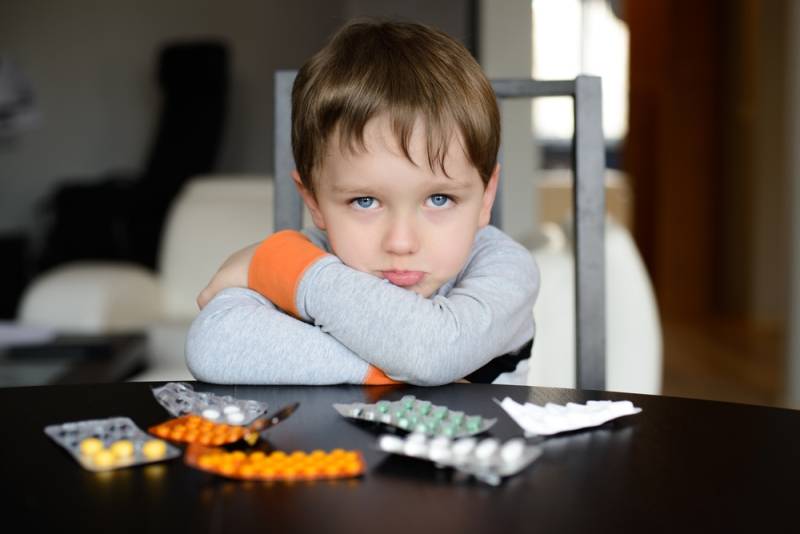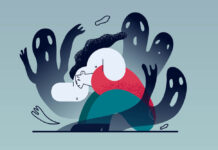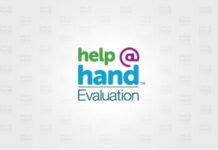A new study, published in JAMA Pediatrics, investigates the patterns of mental health diagnosis and medication treatment within a cohort of children from birth to 8 years old insured by Medicaid. The results confirm previous findings that children on Medicaid receive more psychiatric medication, and prolonged mental health treatment, when compared to their privately insured counterparts.
“In this cohort study of 35, 244 newborns, 19.7% received a psychiatric diagnosis and 10.2% received a psychotropic medication by 8 years; 20% of medication users received 2 or more medication classes concurrently for 60 days or more,” the researchers report. “At age 7 years, half or more of the medicated children had more than 200 days of drug exposure.”

The accelerating increase in the use of psychotropic medication among children in the United States has generated public concern. Particular attention has been given to the use of antipsychotics for behavioral management in children as, “most pediatric psychotropic medication use (67%) is not approved by the US Food and Drug Administration and is therefore prescribed off-label, whereby the evidence for the benefits is not available to balance the risk of potential harm.”
The researchers raise social and ethical concerns about the finding that it is poor, near-poor, and foster care children that are most prevalently prescribed psychotropic medications. In this study, the majority of those being treated were also predominantly African American.
In fact, “little research has been devoted to developmental psychopharmacology despite concerns that early exposure to such medications in utero or in the preschool years could potentially alter physical, cognitive, and emotional development.”
This study is the first of its kind to assess cumulative mental health services in a Medicaid-insured cohort of children from birth until 8 years. Additionally, sex differences in the patterns of initiating psychiatric services among children were examined, information largely unknown prior to this study.
The research team began by selecting a cohort from computerized Medicaid claims data from a mid-Atlantic state in 2007. The outcome measures include psychiatric diagnoses, psychotropic medication class use, the use of psychosocial services, the annual duration of psychotropic medication class use, and additional sex-specific differences between psychiatric diagnosis and psychotropic medication class use. Covariates included sex, race/ethnicity, residence (urban, suburban, rural), and Medicaid eligibility group (i.e. foster care, supplemental security income, family at or below poverty level).
The birth cohort represents 92.2% of the 38,225 Medicaid enrollees born in 2007 and enrolled in this mid-Atlantic state, totaling 35,244 participants. The population is largely African American, 42.9%, with similar distributions of white and Hispanic children. The cohort did not drastically differ by sex, including 17,267 girls to 17,977 boys.
Several findings were significant. First, the percentage of children receiving a psychiatric diagnosis increased linearly from 0.3% at age 1 year to 19.7% by age 8 years. Nearly sixty of all psychiatric diagnoses were categorized as behavioral diagnoses. Attention-deficit/hyperactivity disorder (ADHD) accounted for 43.9% and learning disorder for 31.6% of the psychiatric diagnoses.
The likelihood of receiving a psychiatric diagnosis was greater among white children compared with African American and Hispanic children. More than half of the children living in foster care received a diagnosis contrasted with 16.6% of income-eligible children on Medicaid. Additionally, children living in urban or rural districts were two times as likely to receive a diagnosis compared to those living in suburban counties. Boys were more likely to receive an ADHD diagnosis, while girls were more likely to receive a diagnosis of adjustment disorder or anxiety disorder, though the ratio of boys to girls with an ADHD diagnosis has lowered over time. Nearly one-third of diagnosed children received a learning disorder diagnosis, regardless of sex.
Concerning psychotropic medication use, “the 8-year cumulative incidence of psychotropic medication class use was 10.2%.” By age 8 years, 74.9% of children taking medication were prescribed stimulants, followed by 32.1% receiving an α-agonist (such as clonidine, which can be prescribed for anxiety symptoms), and 19.5% an anxiolytic or hypnotic medication (including benzodiazepines). The authors found that white children and African American children were more likely than Hispanic children to receive a psychotropic medication by 8 years. Boys were likely to begin medication on a stimulant, whereas girls were likely to be introduced to anxiolytics and hypnotics. On this issue, Pennap and colleagues add:
“This finding is particularly concerning because there is insufficient evidence to support the use of anxiolytics and hypnotics as first-line treatment for pediatric mental health conditions.”
Additionally, 86% of the 11.5% of children who initiated treatment with psychotropic medication received a benzodiazepine, “a highly potent subclass of anxiolytics with high potential for addiction and dependence in both pediatric and adult populations.” The duration of psychotropic medication use ranged depending on the age and medication type, from 49 days to 210 days. Those in foster care had 153 additional days of psychotropic medication use from ages 3-7 years, while those eligible for supplemental security income had an additional 193 days compared to other children.
Finally, the use of psychosocial services reached 12.2% by 8 years. The most commonly accessed service was family therapy, followed by individual therapy, and group therapy. The authors also explored the variance of concomitant use of psychotropic medications, finding that most concomitant use begins upon the beginning of school, around 5 years. Ultimately, this study illustrates a substantial use of mental health services in Medicaid-insured youth.
Replication of this study is warranted, as the sample is derived from only one state in the United States and may not be generalizable. Furthermore, this study is based on medications dispensed and not necessarily consumed. Finally, data was lost due to death or migration, and follow-up information was not able to be maintained with those participants. The researchers conclude that their sample contribution is “more modest because we captured services in a single-state Medicaid population without critically important data on clinical outcomes or academic performance,” and instead provide an “8-year cumulative incidence and duration of psychiatric service use in the same children and captures long-term exposures to medications prescribed largely off-label.”
Pennap and colleagues note that while it is not surprising to have an increase in services “given the considerable incidence of trauma and physical abuse among very young Medicaid enrollees,” still there needs to be follow-up research to ensure safety in pursuing these treatment methods. They conclude:
“Our cumulative estimates highlight the extent of early exposure to psychotropic medication and support the need for drug safety monitoring and outcomes research to provide evidence for the benefit-risk, particularly in the early years of life.”
****
Pennap, D., Zito, J. M., Santosh, P. J., Tom, S. E., Onukwugha, E., Magder, L. S. (2018). Patterns of early mental health diagnosis and medication treatment in a medicaid-insured birth cohort. Jama Pediatrics. doi: 10.1001/jamapediatrics.2018.0240 (Link)















“Our cumulative estimates highlight the extent of early exposure to psychotropic medication and support the need for drug safety monitoring and outcomes research to provide evidence for the benefit-risk, particularly in the early years of life.”
So, basically you’re admitting that today’s “mental health” professionals have, for decades, been participating in a giant experiment, of massively drugging huge percentages of American children. But you have zero “drug safety monitoring,” and claim to know nothing about the outcomes? Nor have you any evidence, whatsoever, proving the risks of this mass neurotoxic poisoning experiment, of millions of innocent American children, will have any benefit. Right?
Those of us on this website can give some insight into likely and already proven outcomes. We all know over a million American children have already had the common adverse effects of the ADHD drugs and antidepressants misdiagnosed as “bipolar.”
https://www.alternet.org/story/146659/are_prozac_and_other_psychiatric_drugs_causing_the_astonishing_rise_of_mental_illness_in_america
And I will point out that today’s DSM recommended “bipolar” drug cocktails, which included combining the antidepressants and/or antipsychotics, will result in turning those “bipolar” children into “schizophrenic” children. Since the negative symptoms of “schizophrenia” can be created via neuroleptic induced deficit syndrome, and the positive symptoms can be created via antidepressant and/or antipsychotic induced anticholinergic toxidrome.
https://en.wikipedia.org/wiki/Neuroleptic-induced_deficit_syndrome
https://en.wikipedia.org/wiki/Toxidrome
You “mental health professionals” claim ignorance of these medically known psychiatric drug induced illnesses, that mimic the symptoms of your DSM disorders. Because they were conveniently omitted from your DSM, no doubt for profit motivated, and perhaps more nefarious, reasons. And if an illness is not a billable DSM disorder, today’s “mental health professionals” automatically defame the child with a different, billable DSM disorder, since you all want to be paid.
This “invalid” DSM billing code “bible” misdiagnosis problem, can be seen in the massive percentages of child abuse victims that have been misdiagnosed as “depressed,” “anxious,” “bipolar,” “schizophrenic,” and “borderline.” Today, over 80% of those labeled with the “psychotic and affective disorders” are child abuse victims. Over 90% of those labeled as “borderline” are child abuse victims.
https://www.madinamerica.com/2016/04/heal-for-life/
And all this misdiagnosis of child abuse victims is due to the fact that child abuse is listed in the DSM as a “V Code,” and the “V Codes” are NOT insurance billable disorders.
https://www.psychologytoday.com/us/blog/your-child-does-not-have-bipolar-disorder/201402/dsm-5-and-child-neglect-and-abuse-1
You mention the “anxiolytic or hypnotic medication (including benzodiazepines)” are a deplorable group of drugs that should not be given to children. I agree.
Given this information, what do you think will be the outcome of today’s psychiatric experiment of the mass drugging of American children? I have no doubt today’s “mental health professionals” are, minions of, and the “enemies within” my own country, and you’re destroying the lives and futures of the children of my country.
“I believe the children are our future
Teach them well and let them lead the way
Show them all the beauty they possess inside
Give them a sense of pride
To make it easier
Let the children’s laughter remind us how we used to be….”
STOP DRUGGING THE CHILDREN, “MENTAL HEALTH PROFESSIONALS!”
Here’s an interesting talk I listened to today about the fraud and crimes of today’s “child protective services” and “foster care” industries.
https://www.youtube.com/watch?v=dObdJyo4Er8
We definitely have satanic systemic problems in our country. And, unfortunately today’s DSM deluded “mental health professionals” are all apart of those satanic systems. Your DSM “bible” was debunked in 2013, for good reason.
https://www.nimh.nih.gov/about/directors/thomas-insel/blog/2013/transforming-diagnosis.shtml
Please act accordingly, it’s been five years. STOP DSM DEFAMING AND DRUGGING OUR CHILDREN!
Report comment
I know a little bit about history but I am yet to learn of the atrocities committed on our most vulnerable human beings, children, as is occurring currently in the 21st century.
When did mankind feel that his conscience was not going to be pricked whilst gag banging young 11 to 12 year old girls and drugging babies and children?
Never in the course of humanity as to date has there ever been such vile atrocities committed against babies and children.
I am ashamed to actually exist in this day and age where this is in fact happening and being powerless to stop just one of those children being brutalised in such a way.
If ever there was hell on earth its this.
Report comment
I worked for 20 years with foster kids, and they were “medicated” in many cases at the first sign of any behavioral problems, and it got worse and worse over the 20 years I worked with them. They are probably the most disempowered group in the USA (at least), and it should not be surprising that they get the most drugs as a result.
Report comment
What kind of adults do such things to a kids? It is because they are monsters, not humans. NSDAP politics and narrow minded slaves of pseudo medicine, the inquisition in medical disguise destroy the human state.
Report comment
It is because the “treatment” and “diagnostic” system allows the staff to dehumanize their “clients.” Nazi Germany is proof that people don’t have to be evil to do incredibly evil things, or to stand by while evil things are done by others. All they appear to need is an authority to tell them what to do, and a big enough group of people to agree with them that it’s OK, and all sorts of awful things can happen. Most of the clinical staff at these facilities were nice enough people, but few really empathized with the plight of the youth they were serving. They were trained to look at the kids as a set of “symptoms,” and from that point of view, drugging the kids “made sense” and anyone (like me) who questioned the practice was seen as odd or perhaps even dangerous.
I only wish we could weed out a few monsters and things would be OK. It’s the “normal person” that we have to watch out for!
Report comment
Its tragic what happens to these vulnerable children it really is. I was in an orphanage myself as a child temporarily while my mother had an operation. That was in a convent run by nuns and some of them were particularly cruel. Simply because children are vulnerable and defenceless. It takes a considerable adult coward to take advantage of a child. Lets face it they have no way of defending themselves do they. There are so many who have no conscience whatsoever who do take advantage of children.
Report comment
Charles Dickens in his novels particularly recorded child cruelty and there are so many over the centuries who have been cruel to children. In fact anyone can do anything to a child or infant because as children we are so dependant on adults for our survival. There are so many who get away with diabolical acts towards our little people simply because they can.
Report comment
Part 1: Children reveal painful memories of neglect, heavy duty drug treatments. https://youtu.be/YzmQ1nxYn-Y?t=1m6s
There are not many where the children describe it themselves.
Report comment
When abuse is done to children they in their non developed emotional state understand things totally differently So as adults to recall that abuse the context is out of perspective isn’t it. Also memories fade with time. There is also the impact of such traumatic trauma that the impact is not absorbed in the amygdala right so that memory gets destroyed. Going back to remember trauma in childhood is particularly difficult. Even with the right therapy which is it out of reach anyway for most adults. However I think when recalled that memory is in fact true and accurate. It may be disguised and distorted a bit but I think in therapy if that is worked it can be helpful. Because with this trauma in particular sexual trauma there comes so much shame and guilt. Because it is never understood is it. By children. I don’t think in fact anything will ever change. As regards the abuse of children. I think it will get worse now. Especially as big pharma is involved. The best that can be done is to help those children we can to overcome that abuse and live with it. There is of course the media if possible. That is a good approach. I myself would like to create books for children. Adults do too need a lot of therapy. This is never available and not the correct kind to so many people. The media is a good approach. I think that is wonderful. Cartoon making. Film making. That is good. There was some mention of using Tom Cruise. I’d say go for it. Yeah. I think that is a good idea despite his connections with Scientology.
Report comment
Sorry the Cat I can’t watch your video.
Report comment
Anti-psychiatry is a brilliant cartoonist. She would do a great cartoon. I think people are going to take this up which I think will be amazing. Possibly not even use Tom Cruise. Getting the right connections in showbiz would be a challenge. Advertising promotion of a cartoon essential. Would take money.
Report comment